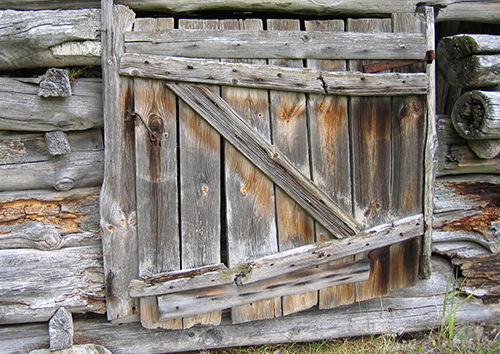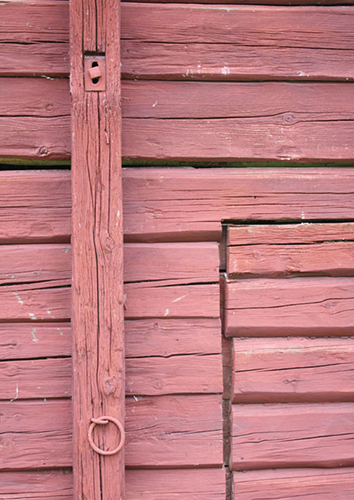Unfinished
We have all seen how amazing aged old barns on fields and old log cabins in the forest look like. They don’t have any finish on them. The planks on barns have an amazing gray tone and no protective layer has been put on them. They have lasted a long time without the protection, tens or even hundreds of years. That’s if the roof has been intact and the barn has been stably on top of the foundation. This means that the planks haven’t been in contact with the moisture on the ground and the blanks have made with proper ventilation. .
It’s important that the area around the barn isn’t grown shut. Even one tree near the barn is enough to raise the moisture level and enable the growth of moss, algae and mold. Insects can also cause great damage when the moisture and other circumstances are right. In log houses it is very important to take care of aforementioned things.
People started to protect wooden buildings pretty early on with substances derived from wood itself: tar, resin and turpentine. Finishing the wooden structures by burning was common especially for structures that touched ground or were embedded in it. In addition different kinds of vitriol treatments such as iron sulfate treatment protected the wood from ultraviolet radiation and harmful insects. Vitriol treatment is still a recommended treatment for wood.
Ecological, natural, traditional and industrial finishes
When you think of possible ways of finishing your project, it would be good to consider the possible ways of finishing. Different painting guides and magazines that use the terms, ecological, natural or traditional painting can give you good advice.
What to consider when using ecological products? The whole lifespan: Where do the materials come from and how have they been made. Are they from across the globe, are they delivered in a ship. Are they canned well. How long do they last. Can they be recycled. How user friendly is the product? How safe is it to use? How well does it age? When used outoors will it peel off? Does it leak from harmful chemicals to the environment? Does it need repair and if so, how often? 
 Natural products are products that have materials that have been collected from nature and produced only with natural materials from the wild. For example linseed oil paint.
Natural products are products that have materials that have been collected from nature and produced only with natural materials from the wild. For example linseed oil paint.
When talking about traditional painting, the paint used is used with the same technique that has been used for hundreds of years. The best example of this type of painting is red ocher paint.
A very simple diagram shows a product that can be made with all of the three types; ecologically, naturally and traditionally painted.
The industrial painting method means a paint that has been produced in a store. These can be traditional oil paints, alkyd paint or dispersion paint (latex).
The starting point of industrial paints is often having synthetic materials. The key element is fast drying.
The purpose of these pages is to give good advice for the consumer. What methods to choose for each purpose and to guide through the process of making a successful finish.
If for some reason you are not sure what products need to be used, the clerks at a paint shop will guide you on what to use, what tools and what kind of a technique to use.